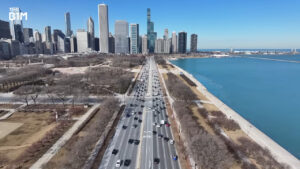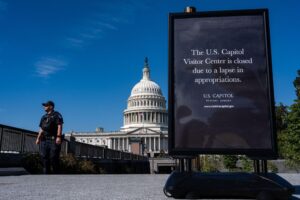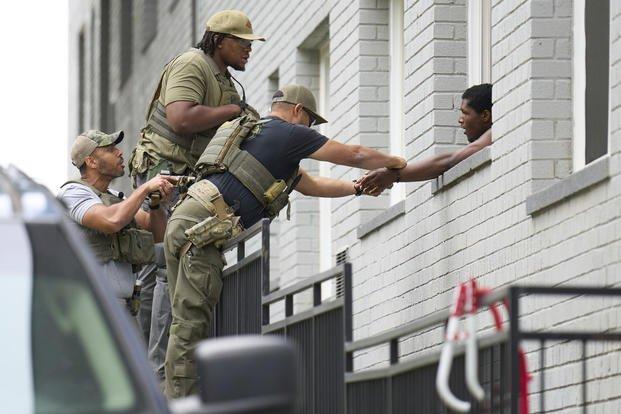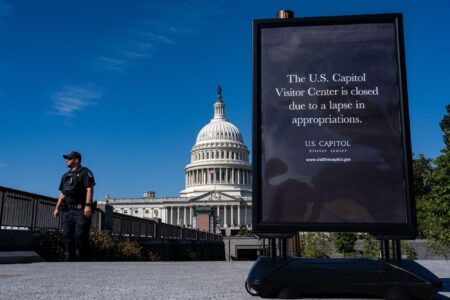How the Federal Law Enforcement Expansion is Reshaping Washington, D.C. Neighborhoods
Washington, D.C. ŌĆö The intensified federal law enforcement initiatives launched during the Trump administration continue to reverberate throughout the capitalŌĆÖs communities. Originally designed as targeted interventions to quell disturbances in select hotspots, these measures have since evolved into a widespread federal presence that is altering the fabric of daily life and community interactions across the city. As residents adjust to this new environment, concerns about the implications for civil rights and local autonomy are increasingly prominent. This article delves into the tangible effects of the federal crackdown, examining its social and physical impact on WashingtonŌĆÖs neighborhoods.
Widespread Federal Policing Alters Neighborhood Atmosphere
Across various districts in Washington, D.C., the surge in federal law enforcement has introduced a noticeable transformation. Citizens report a blend of enhanced security alongside unease stemming from the omnipresence of federal agents in everyday settings. Public spaces such as parks, transit hubs, and commercial areas now regularly experience heightened patrols and security checkpoints, disrupting routines that residents once considered normal. This expanded federal authority includes broader powers to stop and detain individuals, sparking debates about the balance between safety and civil liberties.
The repercussions extend beyond immediate security concerns, influencing economic activity and community relations. Businesses near heavily policed zones have observed fluctuating customer engagement, while neighborhood groups express apprehension regarding the lack of transparency and accountability in enforcement practices. Key changes linked to the federal crackdown include:
- Expanded Checkpoints: Increased inspections on both major roads and side streets.
- Community Forums: Federally organized meetings on safety that have received mixed feedback.
- Heightened Patrols: Significant rise in uniformed officers patrolling residential areas.
- Enhanced Surveillance: Use of mobile cameras and intensified monitoring efforts.
| Neighborhood | Law Enforcement Presence Before | Law Enforcement Presence After |
|---|---|---|
| Capitol Hill | Moderate | High |
| Adams Morgan | Low | Moderate |
| Columbia Heights | Moderate | Very High |
Economic and Safety Concerns Rise Among Residents and Businesses
Local enterprises in affected neighborhoods are reporting tangible impacts from the federal law enforcement escalation. Many business owners note a decline in foot traffic, attributing it to the intensified police presence and occasional confrontations that create a tense atmosphere. Restaurants, retail shops, and service providers have experienced interruptions to their daily operations, with some customers hesitant to frequent areas perceived as volatile. This trend contributes to economic uncertainty, especially for small businesses already navigating post-pandemic recovery challenges.
Meanwhile, residents express a paradoxical sense of insecurity: although the crackdown aims to enhance public safety, it has inadvertently amplified anxiety. Frequent sirens and visible armed patrols disrupt the peace, fostering a climate of unease. Community organizations are advocating for improved communication from federal agencies to alleviate fears and promote cooperative safety efforts.
- Business Impact: Reduced customer visits and operational disruptions.
- Resident Anxiety: Heightened concerns about personal and neighborhood safety.
- Community Requests: Calls for transparent dialogue and engagement with law enforcement.
Calls from Community Advocates for Transparency and Oversight
Community leaders and activists in Washington, D.C. are urging for greater openness and accountability in response to the expanded federal law enforcement presence initiated under the Trump-era policies. The deployment of federal agents in residential zones, often accompanied by assertive tactics and limited public communication, has raised alarms about potential overreach and infringement on civil rights. Both residents and local officials emphasize the necessity of transparent operations and robust oversight to rebuild trust and safeguard constitutional freedoms.
Advocates highlight several critical demands:
- Consistent Public Updates: Regular briefings detailing the scope and goals of federal law enforcement activities.
- Independent Oversight: Establishment of review bodies to monitor enforcement actions and ensure accountability.
- Community Engagement: Initiatives to involve residents in dialogue and address their concerns directly.
These calls reflect a broader desire to strike a balance between effective security measures and the preservation of democratic values, particularly in neighborhoods vulnerable to disproportionate policing.
| Demand | Suggested Action | Anticipated Result |
|---|---|---|
| Transparency | Biweekly public reporting | Improved public understanding of federal activities |
| Accountability | Creation of independent oversight committees | Reduction in misuse of enforcement powers |
| Community Engagement | Regular town hall meetings | Strengthened community-law enforcement relations |
Strategies for Harmonizing Security and Civil Rights in Urban Settings
Addressing the challenge of maintaining public order while respecting individual freedoms demands comprehensive and nuanced approaches. Prioritizing transparency in federal law enforcement operations is essential to build trust between authorities and local populations. This can be achieved through accessible reporting and open communication channels that empower residents to voice concerns safely.
Moreover, incorporating civilian oversight with diverse community representation ensures enforcement actions are subject to fair review, preventing discriminatory practices. Investing in community-centered programs that tackle underlying causes of unrestŌĆösuch as economic disparity, mental health issues, and educational gapsŌĆöcan reduce dependence on aggressive policing. Periodic assessments of federal involvement, using clear metrics to evaluate crime reduction without compromising civil liberties, are also vital.
The following framework outlines potential policy initiatives:
| Policy Focus | Recommended Action | Expected Benefit |
|---|---|---|
| Transparency | Frequent public briefings | Greater community confidence |
| Civilian Oversight | Inclusive review boards | Enhanced enforcement accountability |
| Community Investment | Funding social support services | Lowered urban tensions |
| Policy Evaluation | Regular impact assessments | Balanced security and rights protection |
Looking Ahead: Navigating the Future of Federal Policing in D.C.
As the consequences of the Trump-era federal law enforcement expansion continue to unfold, Washington, D.C.ŌĆÖs neighborhoods stand at a critical juncture. The interplay between intensified security efforts and community unrest highlights the intricate task of balancing public safety with civil liberties. Moving forward, policymakers, residents, and law enforcement agencies will need to collaborate closely to shape a framework that respects democratic values while addressing security concerns. The coming months will be pivotal in determining how these policies influence the cityŌĆÖs social and political environment.





